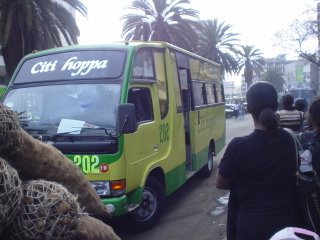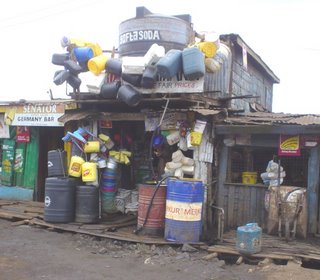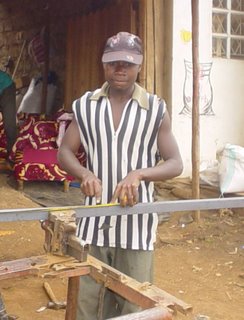There are thousands of “street boys” in Nairobi - all throughout Kenya actually - but by far, most of them are younger than this guy appears to be. Sometimes, as I pass by, I notice him absorbed in reading a salvaged local newspaper. Several times I’ve observed him doing a Sudoku puzzle from a torn page of a paper.
Recently I approached him. He so intently worked on what appeared to be a homemade puzzle, that he was oblivious to my presence until I knelt down and greeted him. He looked up at me rather suspiciously. I told him that I also enjoyed such puzzles and asked if I could take his picture. Reacting somewhat apprehensive and reluctant, he did agree to my request. When I told him I’d give him 20-bob, he replied in excellent English, “No. The picture is free.”
Upon my offering him 20-bob a second time, he politely repeated the same reply. However, as I tore out the puzzle page from my paper, and gave that to him, he was noticeably happy.
This fellow greatly intrigues me. He obviously has a sharp mind. Why does he live on the street? And why here on such a noisy, busy road? Why would he refuse my offer of money? Surely he’s hungry. How does he survive; what does he eat? Do passers-by give him food? Where does he go when it rains?
And finally… how did he get started doing the Sudoku puzzles?
















